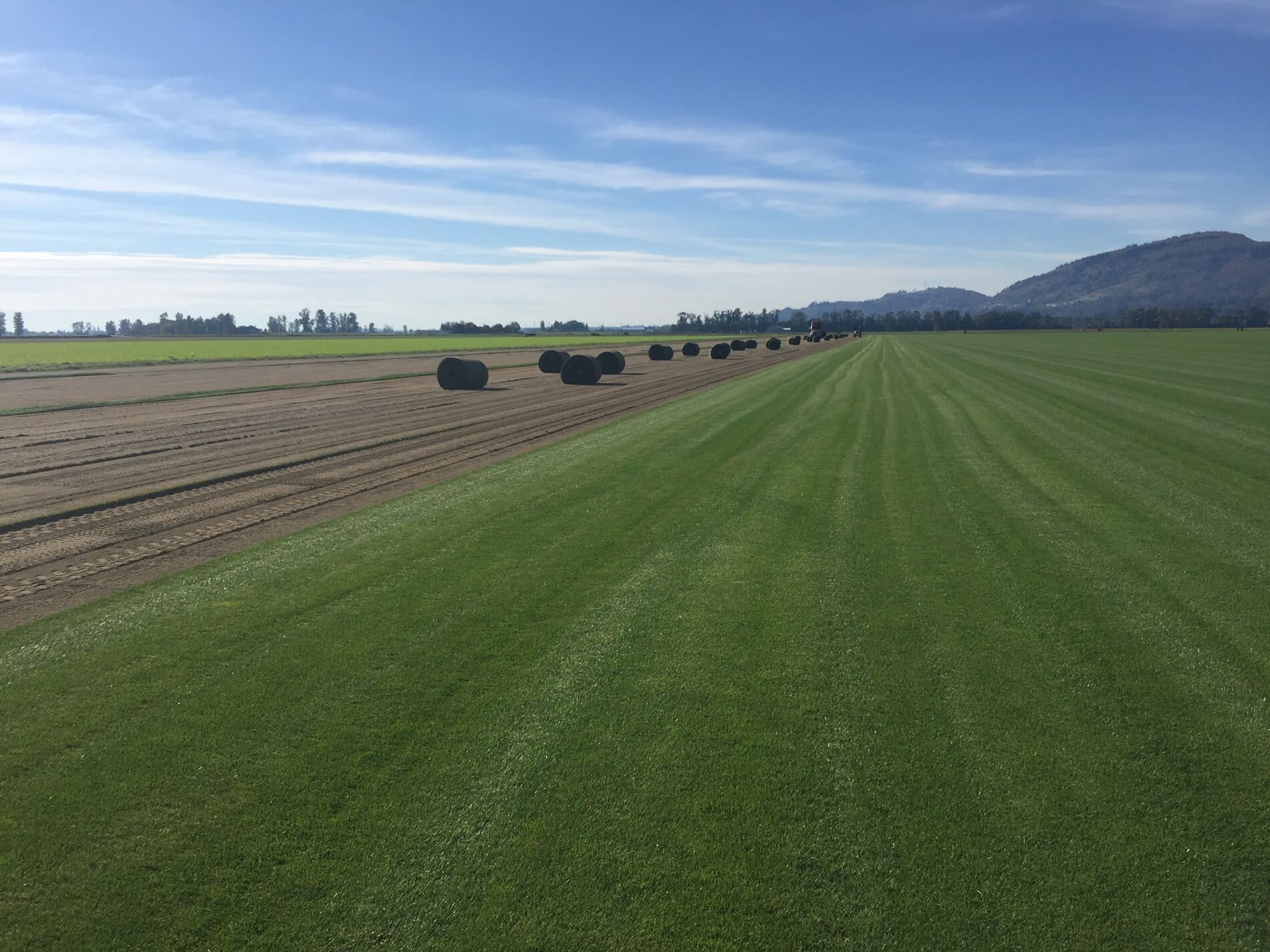
Benefits of Turf to the Environment
Cleans our Air
"Just one acre of grass can absorb hundreds of pounds of fossil-fuel created sulfur dioxide in a single year." In recent years progress seems to have been made in improving our air quality, but the levels of nitrogen oxide, sulfur dioxide and particulate matter in our atmosphere, primarily from the burning of carbon based fuels, is still a major concern. Plants absorb these gaseous pollutants into their leaves and break them down, thereby cleaning the air. An acre of flourishing growth will absorb hundreds of pounds of sulfur dioxide during a year. Grass also takes in carbon dioxide, hydrogen fluoride and peroxyacetyl nitrate ² the worst group of atmospheric pollutants. Grasses in the United States also trap an estimated 12 million tons of dust and dirt released annually into the atmosphere. This dust, dirt and even smoke are trapped in part by the grass leaves, where it is washed into the soil system by water condensed on the leaves and rainfall. Grassed areas significantly lower the levels of atmospheric dust and pollutants.
Our air is cleansed by plants through the process of photosynthesis. Green plants take in carbon dioxide and water and use the energy from sunlight in photosynthesis, which produces carbohydrates for the plant to live off of and releases the true breath of life ... pure oxygen. A turf area 50' x 50' produces enough oxygen to meet the everyday needs of a family of four and each acre of grass produces enough oxygen for 64 people a day.
Erosion Control
Soil erosion is one of the most pressing environmental problems facing the U.S. today. Nearly 6 billion tons of soil wash or blow away each year, a figure exceeding the amount of erosion experienced during the devastating "Dust Bowl" years of the 1930's. Soil erosion costs between $6 and $16 billion a year. Turfgrass is the best defense against soil erosion. Grass binds the soil more effectively than any other plant. The reason is that each grass plant has an extensive root system. Up to 90% of the weight of a grass plant is in its roots. A single grass plant grown under ideal conditions has over 300 miles of roots. Healthy turf areas absorb rainfall 6 times more effectively than a wheat field and 4 times better than a hay field. A thick healthy lawn reduces runoff to next to nothing. No wonder newly excavated earth is so quickly replanted in turfgrass.
Grass Purifies Water
One of the major causes of our growing water quality problem is runoff of contaminants from hard surfaces, such as roads and parking lots. Unfortunately, with expansion and building development open space is lost to these impervious surfaces.
Runoff can be reduced by establishing new lawns and turfgrass areas. The biology of turfgrass makes lawns a near ideal medium for the biodegradation of all sorts of environmental contamination. Turfgrass purifies the water as it leaches through the root zone and down into our underground aquifers. Soil microbes help break down chemicals into harmless materials. This filtration system is so effective rain water filtered through a good healthy lawn is often as much as 10 times less acidic than water running off a hard surface.
Responsibly Managed Lawns Reduce Your Carbon Footprint
The Carbon Footprint of a Lawn- A new study conducted by Dr. Ranajit (Ron) Sahu, an independent environmental and energy expert and University instructor, shows that responsibly managed lawns sequester, or store, significant amounts of carbon, capturing four times more carbon from the air than is produced by the engine of today's lawnmowers. The findings are based on several peer-reviewed, scientific studies and models where carbon sequestration had been measured in managed and unmanaged turfgrass. The study goes on to report that to maximize carbon intake benefits, lawns and other turfgrass areas must be managed by cutting grass, leaving grass clippings, and responsible watering. If one compares a well-managed lawn to a poorly managed lawn or unmanaged grasslands, the net carbon intake of a well-managed lawn is five to seven times higher than the carbon output of mowing.
Temperature Modification
We've all had the pleasant experience of walking barefoot in the yard and feeling how cool the grass is underfoot. That's not an illusion. Turfgrass plays an important part in controlling our climate. Grassed surfaces reduce temperature extremes by absorbing the sun's heat during the day and releasing it slowly in the evening, thus moderating temperature. Grass plants absorb some solar radiation to fuel the photosynthesis process. The irregular surface of lawn areas also scatters light and radiation, greatly reducing glare.
Turf cools itself and its surroundings by the evapo-transpiration process. Each grass blade acts as an evaporative cooler. An acre of turf on a summer day will lose about 2,400 gallons of water through evaporation and transpiration to the atmosphere. Roughly 50% of the sun's heat striking the turf may be eliminated through this transpiration cooling process. The cooling properties of turf are so effective that temperatures over turfed surfaces on a sunny summer day will be 10 - 14 degrees cooler than over concrete or asphalt. Or to put it another way, consider the fact that on a block of eight average homes, the front lawns have the cooling effect of 70 tons of air conditioning!


 Order
Order

